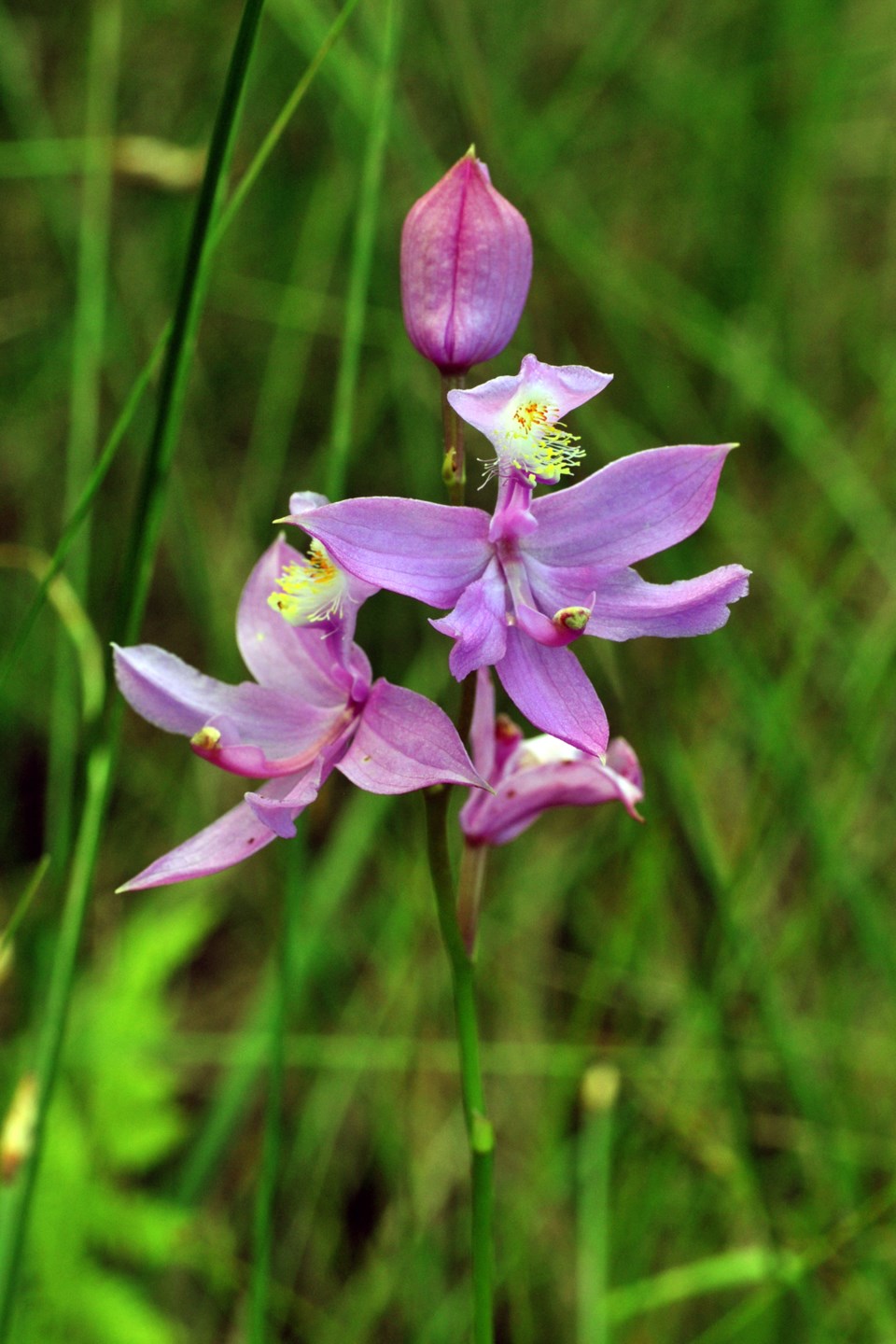In the world of wildflowers, orchids are the superstars. There's not many of them, they hide in out-of-the-way places, are seldom seen, but when they do present themselves... it's show time!
Late June is the peak of orchid growth, with blooms of several species to be sought out and enjoyed. With exotic names like Queen's Slipper, Ram's Head, Moccasin Flower and Coral root, they are representatives of the latest step in botanical evolution.
There are no fossil remains of these plants, no pollen grains imbedded in glaciers, no seeds trapped in the depths of ancient bogs.
A slick salesperson might promote orchids as the new and improved version of local botany; although 'new' means thousands of years in the making. But compared to pine trees, ferns and some others they are indeed the latest version of plant design.
However, and just like so many of our current 'superstars', orchids are fragile by nature, easily disturbed and complex in their relationships with others. To look at the life cycle of an orchid is to marvel at how they manage to reproduce at all.
The seed of an orchid is the size of a speck of dust, and are spread to new areas by the wind.
While that sounds like a great way to colonize new areas there's much more to be done. The seed is so small there is no food reserve, no snack of energy to start that first rootlet or small leaf. The seed must first be found by and then encased by the tendrils (mycelia) of a soil fungus.
The very few seeds that are chosen by the fungus will be fed nutrients for a year or more prior to beginning to grow. Soil wetness, amount of shade, soil pH, associate plants, and amount of solar radiation all must combine ina perfect recipe to allow the wee orchid to grow.
Over the next two to ten years the seedling grows a bit more with the help of that specific soil fungus, stores the energy gleaned within its root system and finally produces a blossom.
You all know what comes next... a little pollination occurs and new seeds are formed.
But orchids make that simple step as complicated as it can possibly get. As the flower bud is developing, the entire blossom swivels upside down (except for Calopogon, it remains right-side up, but more about that in a moment).
The 'top' petal, now on the bottom, often forms a huge lip or pouch that contains the anthers and sought after pollen. The only way cross pollination will work is if an insect, a very particular insect, carries the pollen from one plant to the next.
The insect species that pollinates one kind of orchid can't fit into the pouch of an different species of orchid; it's a 1:1 relationship.
And here's the rub, although the insect can smell nectar inside, there is virtually none available. In the case of the Moccasin Flower, a bumble bee must push open the narrow slit of the pouch, enter and become ticked off that no nectar is available.
The bee then either dies inside, eats a hole through the side of the blossom, or fights it way out through a small exit passageway. Lining that passageway are the anthers laden with pollen that gets rubbed onto the back of the frustrated bee.
But wait, there's more. Having been tricked once about supposed nectar availability, that same bee has to be fooled yet again to enter a second blossom. And if it manages to squeeze out of that bloom, there should be pollen transfer to the anthers. Easy, breezy. And now the seeds are formed.
Remember that Calopogon that doesn't rotate its blossom? The flower opens with the pollen-laden anthers at the bottom, and as a heavy bee lands on the inviting top petal it trips a hinge that lays the bee backwards on the anthers below. Sneaky but effective.
Each drying seed pod contains thousands of seeds, so small that they appear as specks. As the pod withers and cracks open, a stiff breeze will dislodge the seeds and carry them to new places.
A drawback to being an orchid, aside from that complex pollination process, is that they are very attractive to humans.
As humans became more and more civilized, it became important to have an orchid in a vase of water on every upscale restaurant table. Local kids were given a few pennies for each fresh blossom brought to the back door of the establishment.
Transplanting orchids was thought to be a way of having your own personal supply on hand. But very few, if any, survived the move from woodlot to garden. It goes back to that all but invisible soil fungus and the association between it and the orchid.
Over the month of June a few of our prettiest orchids will be bursting open, attracting not only bumblebees but hordes of photographers and orchid enthusiasts.
While the practice of picking orchids has thankfully died away, the trampling of habitat to get that 'perfect shot' is the new threat. Everybody has a camera, everybody wants a close up... we become the paparazzi of botany.
Some well known sites within national and provincial parks have had to ban all humans from entering such sites in a desperate bid to preserve the colourful colony.
All orchids are rare, and orchids are rarely common. When you do find one, treat it with respect and maybe a little awe.



